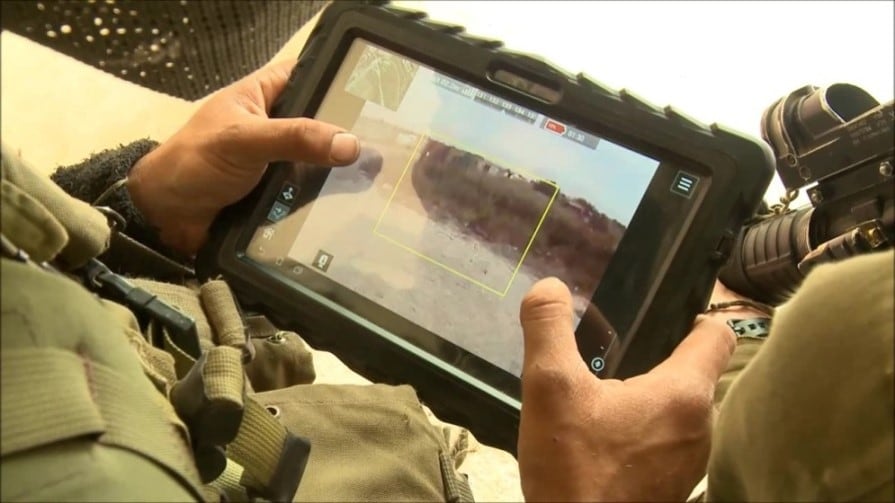JERUSALEM — Israel’s Ministry of Defense has procured the FireFly, a lightweight loitering munition designed for infantry and special forces.
Jointly developed by Rafael Advanced Defense Systems and the MoD, FireFly’s canister-deployed design with multiple rotors enables it to hover around buildings and attack concealed enemies that may be beyond line of sight or hiding in urban environments.
FireFly is designed to fulfill a need that platoons and smaller units have on the modern battlefield for an unmanned system that is rugged and lightweight. Mini-UAVs are increasingly in demand for infantry use, and the ability to combine them with loitering munitions that can conduct surveillance and attack has become the next step for ground forces.
FireFly was designed over the last 15 years based on sketches produced as far back as the Six-Day War, when Israeli soldiers had to fight in the early morning amid trenches in Jerusalem during the Battle of Ammunition Hill. Also taken into account during the design period were Israel’s experiences fighting militants in close combat in urban areas, such as the Gaza Strip, as well as knowledge of the difficulties armies have faced in fighting in places like Mosul, Iraq, against the Islamic State group.
Gal Papier, director of business development at Rafael’s Tactical Precision Weapons Directorate, said the current FireFly model has a seeker, warhead and data link with electro-optical features that are similar to Rafael’s larger Spike missile family. The Spike group of munitions includes precision-guided tactical missiles. The main difference is the addition of dual rotors so the FireFly can hover and remain stable in windy environments.

“It’s a different way of looking at missile guidance,” Papier said. “This is innovative and new — it’s a missile that folds into a small canister.”
First unveiled in 2018, Papier foresees the FireFly as “infantry’s best friend,” enabling forces to both scout and attack. The warhead is small, coming in at only 400 grams, but Rafael says it is lethal enough for infantry and special forces missions.
“Normally the targets are insurgents or suppressing machine guns or a sniper,” Papier explain, comparing the FireFly to UAVs that carry 20-kilogram payloads and must be launched by catapult.
FireFly gives an operator up to 1.5 kilometers of line-of-sight use and 500 meters of non-line-of-sight use. It can return to the user with the click of a button, and its technology provides situational awareness to avoid collisions with obstacles. It can also operate during the day or night with a low acoustic signature.
Its battery and warhead can both be replaced; the warhead can be swapped for another battery to provide double the 15-minute flying time for surveillance missions. The press of a button on the operator’s tablet causes the warhead to slam into an enemy at up to 70 kph.
It is also designed with safeguards, such as an abort capability.
Rafael also foresees the FireFly launched from vehicles, with several units contained in a pod or “beehive” that would operate from inside the vehicle. This is in line with the increased use of smaller tactical UAVs with armored vehicles, and future battlefield concepts that foresee vehicles and infantry units operating in sync with numerous drones.
“We are in [the] design stage of these pods, tailored for different vehicles. We see it as a building block,” Papier said.
Israel’s procurement of the FireFly and its deployment with infantry units are part of the country’s multiyear plan to restructure its armed forces, known as “Momentum.” The plan also calls for increased digitization of land forces and for units to have access to more UAVs and technology. This is meant to bring intelligence assets as far forward as possible to battalion- and company-level units sharing information gathered by UAVs on a network.
Papier noted that the increased deployment of loitering munitions like this will change infantry units as they decide how to make soldiers into dedicated drone operators.
Seth J. Frantzman is the Israel correspondent for Defense News. He has covered conflict in the Mideast since 2010 for different publications. He has experience covering the international coalition against the Islamic State group in Iraq and Syria, and he is a co-founder and executive director of the Middle East Center for Reporting and Analysis.








